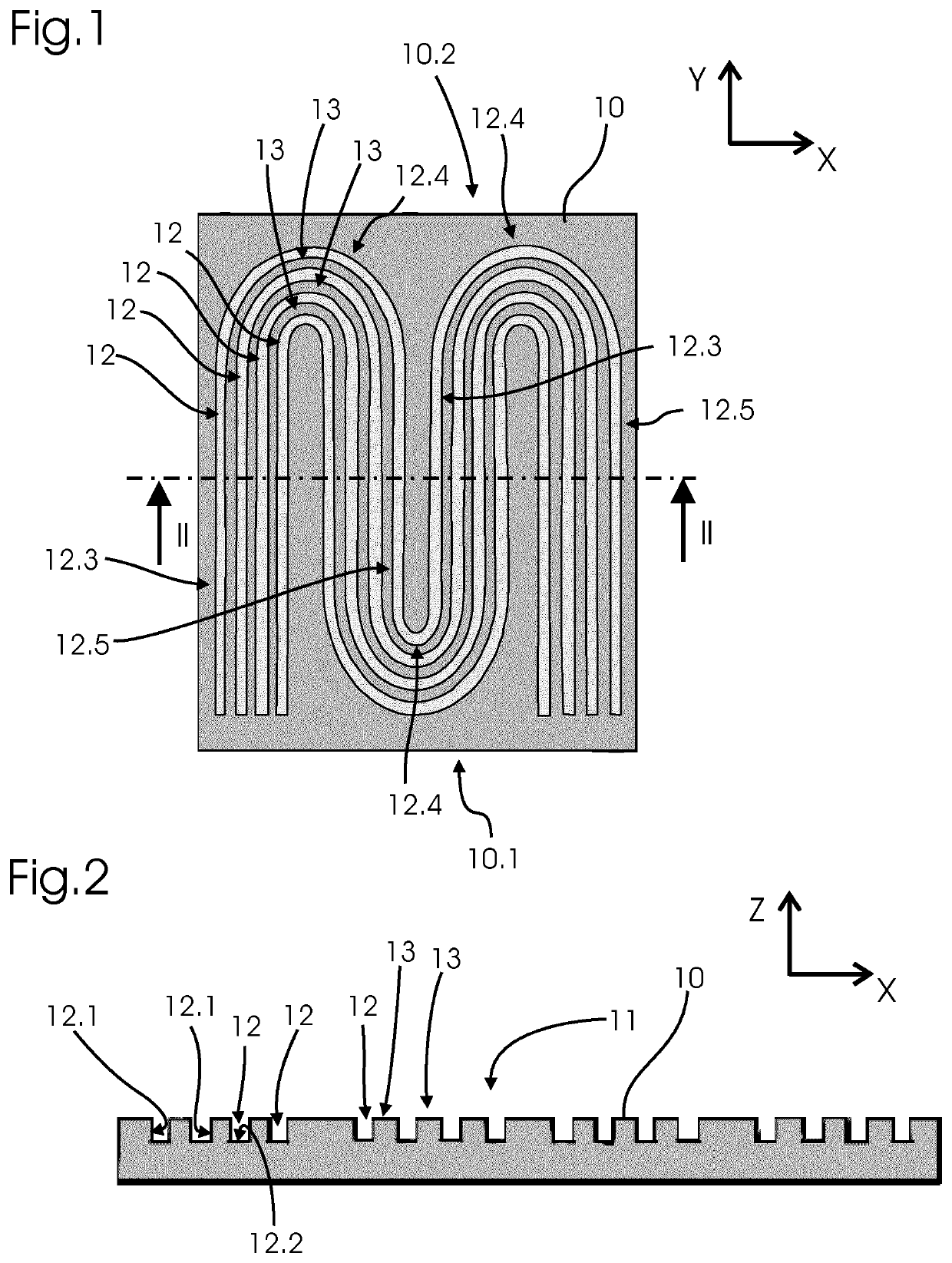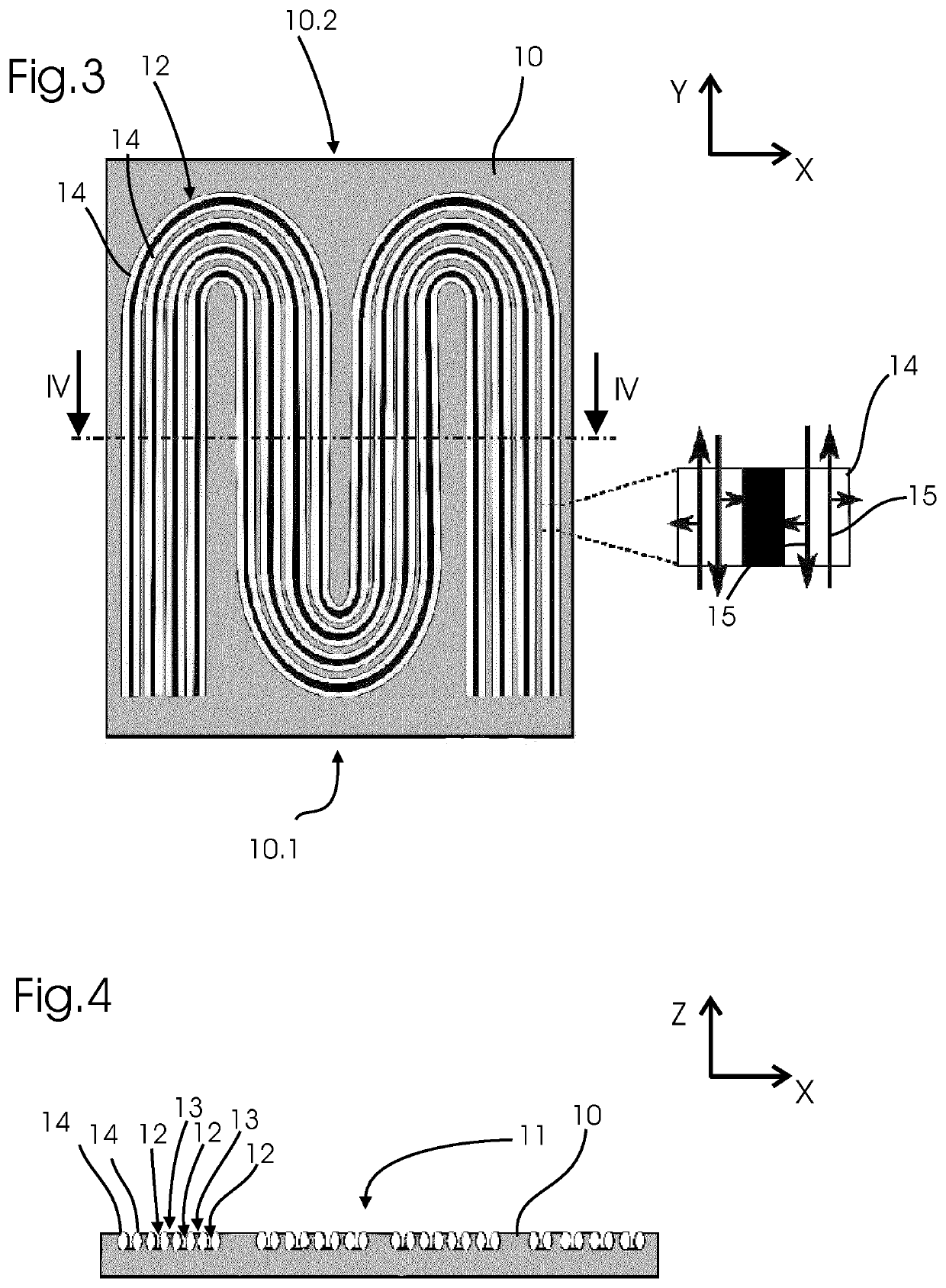Thermoelectric device
a technology of thermoelectric cooler and thermoelectric device, which is applied in the manufacture/treatment of thermoelectric devices, thermoelectric device details, and thermoelectric devices with peltier/seeback effect, etc., can solve the problems of reducing the overall performance, reducing the cooling efficiency of state of the art thermoelectric coolers, and a lot of heat, so as to reduce any detrimental effect, facilitate the manufacturing process, and enhance the effect of effectiveness
- Summary
- Abstract
- Description
- Claims
- Application Information
AI Technical Summary
Benefits of technology
Problems solved by technology
Method used
Image
Examples
first embodiment
[0062]FIGS. 10 and 11 show a thermoelectric device 1 according to the present invention. It comprises a channel portion 50 that is similar to the one shown in FIG. 9. However, on each channel layer 10, three first electrodes 16, 17, 18 are disposed at the first end 10.1, while two second electrodes 19 are disposed at the second end 10.2. The central first electrode 17 and the second electrodes 19 are each disposed on a turning groove 12.4 and extend from an n-region 10.3 to a p-region 10.4. The first electrodes 16-18 comprise a first terminal electrode 16 and a second terminal electrode 18, which are connected to a voltage supply 100. Although not shown explicitly, the first terminal electrodes 16 of all channel layers 10 are connected with each other (and with the voltage supply 100) and the second terminal electrodes 18 of all channel portions 10 are connected with each other as well. The same metals that are used for the positive and negative electrodes 21, 22 may be used for the...
second embodiment
[0065]FIG. 12 is a top view of a thermal electric element 1 according to the invention. The general design is similar to the thermoelectric element 1 shown in FIGS. 10 and 11. However, in this case, there is only one meandering groove 12 having a total of five n-grooves 12.3 and five p-grooves 12.5. Accordingly, there are six first electrodes 16, 17, 18 and five second electrodes 19. It is understood that the total number of n-grooves 12.3 and p-grooves 12.5, respectively, can be greater or smaller than five. Also, although FIG. 12 shows only a single meandering groove 12, this embodiment could be modified to include a plurality of meandering grooves 12.
[0066]FIGS. 13 and 14 show a third embodiment of a thermoelectric element 1 according to the invention. In contrast to the first and second embodiment, it comprises a plurality of consecutive channel portions 50. The channel portions 50 are identical and similar to the design shown in FIG. 10, although they only comprise one meanderi...
PUM
| Property | Measurement | Unit |
|---|---|---|
| relative permittivity | aaaaa | aaaaa |
| relative permittivity | aaaaa | aaaaa |
| thickness | aaaaa | aaaaa |
Abstract
Description
Claims
Application Information
 Login to View More
Login to View More - R&D
- Intellectual Property
- Life Sciences
- Materials
- Tech Scout
- Unparalleled Data Quality
- Higher Quality Content
- 60% Fewer Hallucinations
Browse by: Latest US Patents, China's latest patents, Technical Efficacy Thesaurus, Application Domain, Technology Topic, Popular Technical Reports.
© 2025 PatSnap. All rights reserved.Legal|Privacy policy|Modern Slavery Act Transparency Statement|Sitemap|About US| Contact US: help@patsnap.com



